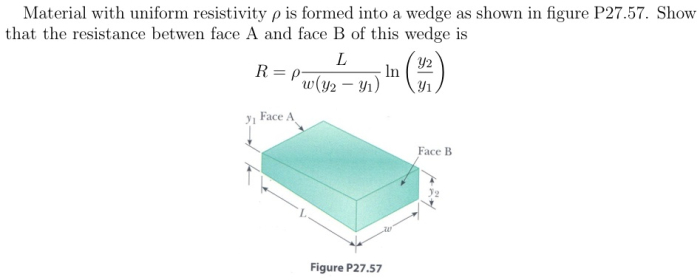Freshman physics textbooks have new editions released every few years. Consequently, the texts rarely have errors. This contrasts with advanced (graduate level) textbooks for which new editions are released every couple of decades, if ever, and have routine errors.
However, one problem has been given for decades, and (last I checked) is still given, and the solution involves a serious conceptual error. This is the problem as given by Serway and Jewett, Physics for Scientists and Engineers, 7th ed., 2008, Problem 27.57.

For me, deriving the requested solution is a two-liner: one for setting up the problem and identifying the required quantities, the other for doing the integration. The problem is probably quite difficult for the typical student. The "solution" is wrong. The equation R = ρl/A requires the current to be parallel to l and perpendicular to A. (The symbols mean length and area, respectively. R and ρ are resistance and resistivity.) Neither requirement holds here. The current expands or compresses (depending on the direction) and goes at an angle compared with what we use as l and A.
For several months, I've been obsessed with solving the problem correctly; it's highly non-trivial. I might be finally approaching a solution, though.



Comments
It can be worse, see the math error in the ACT test
Was something to do with a cross-section thru a right pyramid and how many parallelograms were created.
TOTAL f...up on the test designer's part.
The obvious answer was wrong but that is what the testers wanted. If you were very good in math there were more parallelograms but that correct answerer was marked as wrong.
How many sharp students were hurt in their college placements by that.
This was several decades ago ( ie 1960s into 70s).
Later studies found the ACT and related tests were poor indicators of college readiness. One's high school grades were a much better predictor.
John in Wauwatosa
Never heard of that.
I never heard of that specific problem. But I have heard of a couple of standardized-test problems that were erroneous.
-- Daphne Xu
Hmm…It’s true at both limits
As y1 approaches 0, or as it approaches y2. Just not anywhere in between!